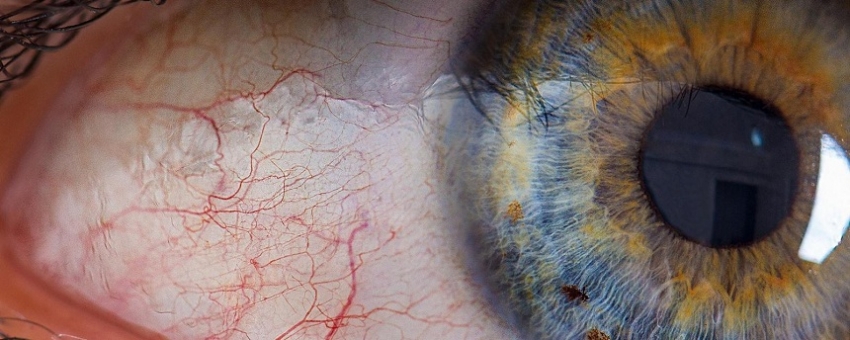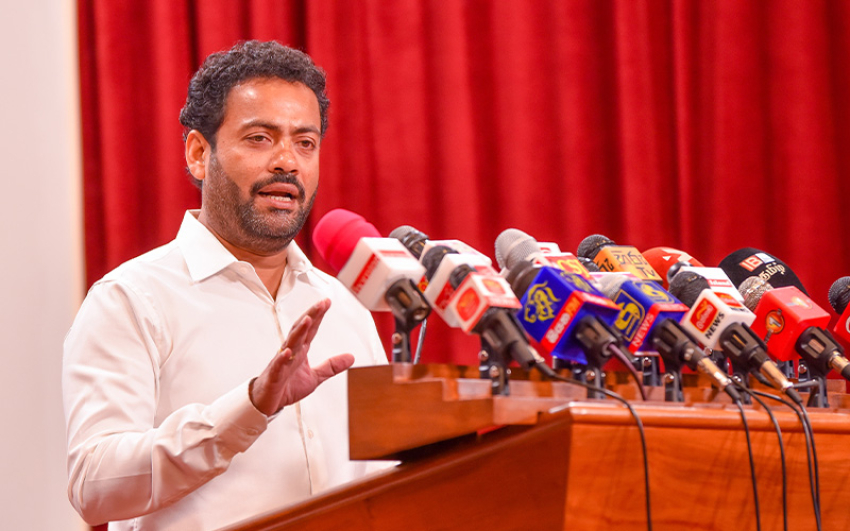What is the worst time of day to get sick?Our internal body clocks govern more than just when we sleep but also determine how our immune systems perform and how we heal. And we might be able to use this to keep us healthier.
Take a good hard look at the skin of your forearm. Pinch it if you like. It may not look or feel any different from the way it did 12 hours ago, but if you were to cut or burn it, the skin would heal more than twice as fast if you injured it during daylight hours, compared to if it happened at night.This variation in our response to insult and injury extends far beyond the skin. If you go for a seasonal flu jab, aim for a morning appointment: you’ll produce more than four times as many protective antibodies if you’re injected with it between 9am and 11am, compared to six hours later. Should you ever require heart surgery, however, the converse is true: your long-term survival prospects are significantly better if you go under the knife in the afternoon.
People who suffer burns during the night take approximately 11 days longer to heal than those injured during the dayIndeed, wherever you look in the body, from the brain to the immune system, 24-hour rhythms that govern the activity of cells and tissues – often referred to as “circadian rhythms” – appear to dictate our physical recovery from infection and injury.“Who we are physiologically in the daytime is different than who we are at night,” says Tami Martino, director of the Centre of Cardiovascular Investigations at the University of Guelph in Ontario, Canada, who is seeking to apply this emerging knowledge about biological timing to human and animal medicine. From cancer to cardiology, arthritis to allergies, a better understanding of these rhythms could enable drugs and interventions to be given to patients at times when they’re most likely to be effective and the least likely to cause harm. Strengthening these rhythms may also enable patients to recover faster and reduce some physical symptoms of disease.
“It is my personal belief that circadian medicine can forever change the way we manage human health,” says Martino. “It is right up there on the scale with things like gene therapy, stem cells and artificial intelligence for one of the most promising new technologies to deal with global burdens of disease.”
The idea that our physiology varies from hour to hour is, in fact, an ancient one. The Greek physician Hippocrates observed a 24-hour ebb and flow in the severity of fever. Traditional Chinese medicine also describes the vitality of different organs peaking at various times – the lungs between 3am and 5am, the heart between 11am and 1pm, the kidneys between 5pm and 7pm, and so on. There is, however, renewed interest in the effect of our internal body clocks on illness and treatments from modern medicine thanks to a growing number of recent studies.By tweaking our urges, behaviour and biochemistry, these rhythms prepare us for regular events in our environment, which are themselves dictated by the daily cycle of light and dark. When it comes to healing, there is a good reason why it might be heightened during the day compared to at night.
Getting a flu jab in the morning might mean your body is more able to protect itself against the influenza virus than if you get it in the afternoon “Our cells evolved to be able to heal wounds more effectively at the biological time when they are more likely to occur,” says John O’Neill, a circadian biologist at the Medical Research Council’s Laboratory of Molecular Biology in Cambridge, UK. “If you are a human, it is extremely unlikely that you will incur a major wound when you are asleep in the middle of the night, whereas during the day we are much more likely to become wounded.”
His own research has revealed that cells called fibroblasts, which help to repair tissue damage by laying down new collagen for skin cells to stick to, migrate into injured areas more rapidly during the daytime.
“We consistently found nearly a two-fold difference in wound healing simply as a function of biological time,” O’Neil says. And when they analysed data from the International Burn Injury Database, they found that people who suffer burns during the night take approximately 11 days longer to heal than those injured during the day.
Our immune system is also subject to biological rhythms that affect how it responds to infections. It might seem strange at first to vary our ability to respond to pathogens according to the time of day says Rachel Edgar, a virologist at Imperial College London. But it may have evolved this feature as a means of protecting us against over-activation of the immune system.
“If you get really big inflammatory response, you need to be able to control that otherwise it can cause a lot of damage,” says Edgar.
She has been exploring the interaction between circadian rhythms and viral infections such as herpes. In one study, she found that the herpes virus replicated 10 times as much of itself in mice that were infected at the beginning of their rest period – which, being nocturnal, falls during the early morning – compared to if they were infected at the start of their active period. Their findings suggest that the effect may be due to more than changes in the activity in the immune system. The daily rhythms of the infected cells themselves also affect the extent of a viral infection.
This evidence fits with a recent human study, which found enhanced responses to the seasonal flu vaccine when it was given in the morning compared to the afternoon. Even so, suggesting that there’s an optimal time of day to fall ill is too simplistic, cautions Edgar.
“It’s going to be different for different infectious agents,” she says.
Take sepsis, an overwhelming, and life-threatening response to an infection – it can be triggered by injecting molecules found on the surface of bacteria into the blood. If you do this to mice during their “night”, just 20% of them survive, compared to more than 90% if they’re injected during their active period.
(Credit: Getty Images)
Taking certain medicines in the morning rather than the evening may affect how effective they are (Credit: Getty Images)
The findings are opening up exciting new prospects for treating infectious diseases.
“If we know that a virus spreads to neighbouring cells at a particular time, we could potentially give antiviral therapies at the time when they are going to be most efficacious,” says Edgar. “Doing so could reduce the quantity of antivirals you need to give, which also has implications for patient compliance.”
It’s not only our response to infections that could benefit from this approach. More than half of the World Health Organization’s essential medicines – 250 drugs found in every hospital in the world – appear to hit molecular pathways regulated by internal cellular clocks, which could make them more or less effective depending on when they are taken. These include the common painkillers aspirin and ibuprofen, as well as drugs for blood pressure, peptic ulcers, asthma and cancer.
In many cases, the drugs in question have a half-life of less than six hours, which means that they don’t stay in the system long enough to work optimally if they’re taken at a sub-optimal time. For instance, the blood pressure drug, valsartan, is 60% more effective when taken in the evening, compared with first thing in the morning. Aspirin has been found to be more effective when taken in the evening, as are some antihistamine tablets for allergies such as hayfever.
What keeps our biological rhythms in time?
Circadian rhythms are generated by every cell in the body, but they are kept synchronised with each other, and with the time of day outside, by exposure to a regular cycle of light and dark.
Exposure to bright light at night delays the timing of these rhythms, whereas bright light soon after dawn advances them. They can also be shifted by altering the timing of when we eat.
Crucially though, the rhythms in our various organs and tissues don’t all shift at the same rate, so erratic exposure to light and dark, combined with eating when the body doesn’t expect it, can cause them to fall out of synchrony with each other.
A recent human study suggests that radiation therapy may be more effective if administered in the afternoon rather than the morning.
Timing drugs and treatments to when they’re likely to be more effective is not quite as easy as it sounds though. The cost of clinical trials soar if you have to start systematically testing for the right time of day to give a treatment. There’s also an issue around getting patients to do as they are told. Getting them to stick to a course of therapy is already tricky, but ensuring they take those drugs at a specific time is even more so.
O’Neill and others suspect that this is a key reason why, despite expressing an interest in so-called chronotherapy, drugs companies haven’t yet done a huge amount with it.
Not everyone’s circadian rhythms are the same either. Some of us are larks and some night owls. A significant proportion of the population also work night shifts, which can have its own impact on the circadian rhythm and health. And there’s currently no quick and simple test to confirm precisely where the hands of an individual’s internal clock are at any given time.
(Credit: Getty Images)
Hospitals at night often have a lot of artificial light that can not only disrupt patients’ sleep but also how their body heals (Credit: Getty Images)
Then there’s the hospital environment itself – many modern hospital buildings have small windows and dim indoor lighting that remains switched on day and night. This is problematic, because too little daylight and too much artificial light at night are disruptive to our biological rhythms and sleep.
Misaligned or flattened rhythms are a common feature of hospital patients. Compounding the problem, certain drugs, including morphine, can also alter the timing of circadian clocks, while patients’ sleep – also critical to their ability to heal – may be further disrupted by pain, worry or noise. It is leading to questions about how seriously this is impeding their recovery and survival.
Some of the strongest evidence comes from patients with heart disease. Like other tissues, the cardiovascular system has a strong circadian rhythm – our heart rate and blood pressure are lowest when we’re sleeping, but rise sharply upon waking up; our platelets, small blood fragments that help blood to form clots, are stickier during the day; while the levels of hormones like adrenaline, which constrict our blood vessels and make the heart beat faster, are also higher in the daytime. These circadian variations affect the timing of serious cardiac events, such as heart attacks.
“If you monitor people coming into emergency wards you find that heart attacks are most likely to happen between about 6am and noon compared to any other time of day or night,” says Martino. However, timing may also affect our ability to recover from heart injury.
One recent study suggested that for people undergoing heart valve replacement surgery, those who had surgery in the afternoon had half the risk of experiencing a major cardiac event during the following 500 days compared to those who underwent morning surgery. If all patients underwent afternoon surgery, this might result in one major event being avoided for every 11 patients, the researchers calculated. Other studies have indicated that, for patients recovering from a heart attack or heart surgery, those with greater exposure to daylight have higher survival rates and get out of hospital sooner.
Animal studies are providing insight into why this might be. When Martino and her colleagues exposed groups of mice either to normal or disrupted light-dark cycles after simulated heart attacks, they found significant differences in the number and type of immune cells that rallied to the heart, the amount of scar tissue – and, ultimately, survival rates. Mice whose circadian rhythms were disrupted, as they might be during a hospital stay, were more likely to die from their heart injury. Further studies have revealed differences in the type and number of immune cells that infiltrate injured heart tissue, depending on what time of day the injury occurs.
“Some intensive care units or cardiac care units will dim the lights a little bit at night, which is a bit helpful, but some don’t dim at all,” says Martino. “For example, if people come into emergency wards and there’s no beds available, they might be under bright light all night – or they might even be in a corridor all night, having had a heart attack or stroke. And so obviously their sleep and circadian rhythms are going to be profoundly disturbed during those first couple of days which are so critical for healing.”
So, what to do about it? Scheduling surgery for when the body is best placed to cope with it is one solution. For heart surgery, that might be the afternoon, but it may differ for other interventions. For instance, O’Neill’s study of wound healing suggested that more collagen is laid down when injuries are sustained during the daytime, which may be associated with greater scarring.
(Credit: Getty Images)
Having heart surgery in the afternoon may be better for the patient recovery but it may also leave a nastier scar (Credit: Getty Images)
“For cosmetic surgery, there might an argument for performing surgery much later – possibly in the night – because it would take longer to heal, but may result in fewer scars,” he speculates, stressing that no-one has yet tested this.
Another solution might be the installation of so-called circadian, or human-centric, lighting systems which vary in intensity and colour over the course of 24-hours, attempting to mimic natural lighting conditions outdoors. At Glostrup Hospital in Copenhagen, Denmark, doctors have been measuring the impact of such a system in the stroke rehabilitation ward. The data so far suggests that patients exhibit more robust circadian rhythms in response to the circadian lighting system, and show reduced depression and anxiety, compared with those in a section of the ward with conventional hospital lighting.It may even be possible to design drugs that can stabilise circadian rhythms in hospital patients – or stall them for long enough to perform surgery at the optimal time for recovery. Such molecules are already being tested in animals, with promising results.“In the future, I can envision a world where we are using a circadian pill, or the presence or absence of light to cure heart diseases,” says Martino.Light, sleep and timing; we often take them for granted, but these three very basic things have the potential to transform health care.
Why the quickest route to happiness may be to do nothing
Psychological research shows that the harder we strive to be happy, the less likely we are to achieve that goal
How do you envisage the pursuit of happiness?
For many, it is a relentless journey, and the more you put in, the more you get out. Just consider the following episode from Elizabeth Gilbert’s best-selling inspirational memoir Eat, Pray, Love, in which she recounts some advice from her Guru. “Happiness is the consequence of personal effort. You fight for it, strive for it, insist upon it, and sometimes even travel around the world looking for it,” she writes. “You have to participate relentlessly in the manifestations of your own blessings. And once you have achieved a state of happiness, you must make a mighty effort to keep swimming upward into that happiness forever, to stay afloat on top of it. If you don’t, you will leak away your innate contentment.”
While this kind of attitude may work for some, the latest scientific research suggests that it can also seriously backfire for many people – leading, for instance, to feelings of stress, loneliness, and personal failure. According to this view, happiness is best seen as kind of timid bird: the harder you strive to catch it, the further it flies away.These findings help to explain the familiar stress and disappointment that some feel during special events such as their birthday, Christmas or New Year’s Eve. But the research also has profound consequences for your long-term wellbeing, with some useful guidance for arranging your broader life goals.
Self-help or self-hinder?
Iris Mauss, now at the University of California, Berkeley, was one of the first psychologists to explore the idea scientifically.She says she was inspired by the sheer volume of self-help books that have been published in the US in last couple of decades, many of which presented happiness as the sine qua non of existence. “Wherever you look, you see books about how happiness is good for you, and how you basically should make yourself happier, almost as a duty,” she says. But are those volumes only setting people up for disappointment?
“People might set very high standards for their own happiness as a function of this – they may think they should be happy all the time, or extremely happy, and that can set people up to feel disappointed with themselves, that they fall short – and that could have these self-defeating effects.”
If you enjoy this, you may also like:
Why it pays to be grumpy and bad-tempered
A new way to look at emotions and how to master yours
How to boost your mood with a 10-minute exercise
She also wondered if simply asking the question – how happy am I? – could create a self-consciousness that quashes the feelings you are trying to cultivate.
(Credit: Getty Images)
Reading about happiness can - ironically - take the pleasure out of enjoyable events (Credit: Getty Images)
Working with Maya Tamir, Nicole Savino and Craig Anderson, Mauss tested the idea with a series of studies. A detailed questionnaire, for instance, asked participants to rate statements such as:
How happy I am at any given moment says a lot about how worthwhile my life is
To have a meaningful life, I need to feel happy most of the time
I value things in life only to the extent that they influence my personal happiness
As expected, the team found that the more strongly the participants endorsed those sentiments, the less content they were with their current life.
The picture was complicated by the participants’ circumstances. For people who had recently experienced stressful events such as a bereavement, say, the attitudes to happiness made no difference. So a desire to be happy won’t necessarily make you feel worse when your circumstances are genuinely tough – but it can quell the feelings of contentment that might naturally arise when times are good.
Mauss and her colleagues’ next step was to see if they could manipulate people’s attitudes to alter their happiness in the short-term. To do so, they asked half their participants to read a fake newspaper article extolling the importance of happiness, while the control group read a similar article about the benefits of “good judgement”, with no reference to emotion. The team then asked the participants to watch a heart-warming film about an Olympic win, and questioned them about their feelings afterwards.
Once again, they noted an ironic effect: the film was less likely to buoy the mood of the people who had been primed to desire greater happiness, compared with the people who had read the neutral article.
It seems that reading about the happiness had raised the participants’ expectations of how they “should” be feeling when watching something optimistic and hopeful, and so they were constantly questioning how they felt. When their actual feelings didn’t reach those standards, they finished the film feeling disappointed rather than elated.
(Credit: Getty Images)
The conscious desire to increase their happiness can also lead people to feel lonely and disconnected from those around them (Credit: Getty Images)
You’ve probably felt this way during a big event like a wedding, or an expensive “trip of a lifetime”: the more you wanted to enjoy every last moment, the less fun it became, whereas an unexpectedly good trip somewhere nearby may have been a far more positive experience. Mauss’s research, however, shows that this might apply to many other areas of your life.
Mauss has since shown that the desire for (and pursuit of) happiness can also increase feelings of loneliness and disconnection, perhaps because it causes you to focus your attention on yourself and your own feelings rather than appreciating the people around you. “Self-focus might make me engage with other people less, and I might judge other people more negatively if I perceive them to ‘mess’ with my happiness,” Mauss added.
These effects don’t end there. Earlier this year, Sam Maglio at the University of Toronto and Aekyoung Kim at Rutgers University found another way that the conscious pursuit of happiness may backfire: by leading us to feel that time is slipping away.
(Credit: Getty Images)
Focusing too much on your future happiness may lead you to undervalue your current achievements (Credit: Getty Images)
Like Mauss, Maglio and Kim used a range of elegant studies to pin down a causal effect, including self-reported questionnaires and interventions. One of their studies asked participants to list the 10 things that would make them happy in their life (which might be something as simple as devoting a few hours a week to be with your family). Rather than leading to feelings of optimism about the future, it caused them to be especially stressed about the limited amount of time they had to do all those things – and they were less happy as a result. This was not true if they simply listed the things that made them happy at that moment - it was the desire to increase their happiness that was the problem.The problem, says Maglio, is that happiness is something of a nebulous and moving goal – it’s very difficult to feel that you’ve reached maximum happiness and even if you do feel content, you want to prolong those feelings. The result is that you are always left with more to do. “Happiness devolves from something pleasant that I can enjoy right now, to something burdensome that I have to keep working at over and over and over,” Maglio says.
Remember Elizabeth Gilbert’s description of “the mighty effort to keep swimming upward into that happiness forever, to stay afloat on top of it” in Eat, Pray, Love? That’s exactly the kind of thinking that, according to Maglio’s research, will actually make us less happy.The active pursuit of happiness can lead us to feel like time is slipping awayThese results should not be taken to discourage treatment for serious mental health issues such as depression: with a clinical problem, it is always better to seek professional help. And Maglio argues that the findings aren’t a reason to avoid big life decisions that really could improve your own wellbeing – such as leaving an abusive partner. Sometimes, we really do need to focus on our immediate happiness.
If you aren’t facing a major life challenge, however, these effects might lead us to rethink our attitudes and behaviours. Maglio points out that social media makes us especially conscious of other people’s airbrushed lives, potentially increasing our desire to live a happier, more exciting life. He thinks we would be happier if we didn’t look to others to set our standards for what constitutes a good and meaningful life. “If you are constantly reminded of your friend at this exotic location or at that fancy dinner, I think that might serve as a reminder that other people are happier than you – and kick-start that goal of happiness again,” Maglio said. “I definitely think this desire for happiness is increasing nowadays.”Mauss, meanwhile, points out that a lot of research has found that people who take a more “accepting” attitude to negative feelings – rather than constantly trying to fight them as the enemy of our wellbeing – actually end up more satisfied with their life over the long-term. “When you are striving to be happy, you may become judgemental and unaccepting of negative things in your life… you almost berate yourself for feelings that are incompatible with happiness,” she says. For these reasons, she advises adopting a more stoic attitude to life’s ups and downs, in which you accept bad feelings as fleeting events rather than trying to eliminate them entirely.None of this is to deny that some small tricks – such as keeping a “gratitude journal” and practicing kindness to others – do increase your wellbeing, particularly if they cause you to recognise your contentment in the here and now. (See our feature: A 10-minute exercise to boost happiness.) But don’t expect a huge, immediate lift in your mood, and try not to keep on questioning how you are feeling.Happiness really is like a timid animal. And once you stop chasing it, you might just find that it appears naturally of its own accord.
The 'unwarranted hype' of stem cell therapies
Clinics claim that expensive stem cell therapies can help patients with dementia, autism, multiple sclerosis and even cerebral palsy - and crowdfunding campaigns to pay for the treatments are increasingly common. But are the patients and the donors being misled about the benefits and the risks?
By Jules Montague
Jay Shetty is 8 years old. He is smart and bright, says his mother Shilpa, even if he can’t do all the things his younger brother can. “Jay doesn’t sit up or use his hands much. He’s non-verbal and we don’t know how well he can see,” she says. “But he plays with us and tries to copy everything his younger brother Kairav does.”Jay has cerebral palsy. In his early years, Shilpa was desperate to find anything that might help him. Scouring the internet late each night, she read about a stem cell trial at Duke University in North Carolina but Jay wasn’t eligible. When Kairav was born in 2015, Shilpa and her husband stored their younger son’s umbilical cord blood, which was rich in blood stem cells, hoping another trial would emerge. It did, and this time, children with sibling cord blood could participate. Was she worried about the risks for Jay? “It wasn’t invasive and it couldn’t do any harm really.” To raise the £15,000 ($18,200) treatment bill, they supplemented money they had already fundraised for private physiotherapy and hydrotherapy with a personal loan and a further fundraising push supported by the cord bank where Kairav’s cord blood had been stored.Cerebral palsy is a group of lifelong conditions that affect movement and coordination. In Jay’s case, Shilpa explains, there were complications around the time of his birth that led to the condition. There is no cure for cerebral palsy but physiotherapy, speech therapy and occupational therapy can help some symptoms. Shilpa hoped, though, that Jay’s stem cell therapy – a two-hour infusion into his veins – would bring benefits far beyond everything they had tried before.
An assistant prepares a stem cell treatment for a cosmetic procedure (Credit: Getty Images)
We all have stem cells – these are building-block cells of sorts, with the ability to develop into a wide range of specialised cell types, such as muscle, skin, or brain cells. Stem cells not only replenish our old cells but also spring into action to repair and replace injured tissue. As a result, they have been likened to our own army of microscopic doctors, but that army is relatively small.The excitement around stem cell therapy revolves around the ability to grow more of these cells in the laboratory so they can be used to produce new tissue, replace damaged cells, and unravel disease mechanisms.
You might also enjoy:
Why vitamin pills may be bad for you
A spa where patients bathe in radioactive water
The ambitious quest to cure ageing
So far, researchers have primarily focused on developing two different types of stem cells: embryonic and adult. Embryonic stem cells, which are extracted from a growing embryo, have the natural advantage of being able to give rise to any other cell in the body, an attribute known as pluripotency. But some people have raised ethical concerns about the use of embryos in deriving these stem cells – issues that are circumvented by the use of stems cells harvested from adult tissues. Adult stem cells are not naturally pluripotent, which means they tend to be more specialised and so only able to develop into a narrower range of cell types. They can be re-programmed, however, to regain that developmental flexibility.
Stem cell therapies certainly do hold genuine promise for certain disorders. Proven and licensed stem cell-based treatments already exist for blood and immune conditions such as leukaemia, lymphoma and myeloma. It is also approved in some countries for chemical burns to the eye.
Hopes of using stem cells to treat other disorders have inspired many new clinical trials and driven a “stem cell tourism”, centred in Ukraine, Panama and Thailand. By 2018, there were over 432 US-based business at 716 clinics engaged in direct-to-consumer marketing of stem cell treatment.
These clinics universally share one feature: eye-watering fees – and even trials like the one at Duke University have a hefty price tag.
(Credit: Getty Images)
Embryonic stem cells are removed from deep freeze and thawed before being worked on (Credit: Getty Images)
That’s where crowdfunding comes into its own. A recent study in the Journal of the American Medical Association identified 408 US campaigns for stem cell treatment on YouCaring and GoFundMe, with more than $7m sought and 13,050 donor pledges. The clinics often actively encourage these campaigns: one at Northwestern Medicine has a handbook with a section on “soliciting methods”.
The campaigns often underplay potential risks or omit them entirely:
“It’s that simple and quick, and with only minimal side effects,” claims one page attempting to raise funds for a man with Parkinson’s.
“Most importantly it has been shown to slow the disease progression without any side effects,” describes another, raising funds for someone with amyotrophic lateral sclerosis (ALS) – a common form of motor neurone disease.
Only 26 of those 408 campaigns mentioned ‘risk’ and even then as risk-free or low-risk compared with alternative treatments.
It’s understandable that campaigners might underplay the dangers – donors might not contribute otherwise. But these cases tell another story:
In 2017, Doris Tyler, a 77-year old former music teacher raised money on GoFundMe to cover stem cell treatment in Georgia (US) to treat age-related macular degeneration (ARMD). “We love you, Doris!” one supporter wrote. Before treatment, she was able to read large-print books and navigate her home. Tyler is now almost blind: “When I wake up in the morning one of the hardest things is opening my eyes and seeing that everything is still dark. And it’s going to be this way until I go to sleep.” At least three other patients with ARMD lost their vision following stem cell treatments in Florida in 2015.
At least 17 patients were hospitalised over the past year in the US after umbilical cord blood injections. The Centers for Disease Control confirmed a series of bacterial infections. Most of these patients were treated at orthopaedic, chiropractor and pain clinics and were given injections into their spines, knees, and shoulders.
Following a stroke in his early 60’s, Jim Glass sought stem cell treatment in Argentina, China, and Mexico (cost: $200,000). A spinal cord tumour subsequently paralysed his right leg (the stroke had already paralysed his left). DNA analysis indicated the tumour arose from the injected stem cells.
A nine-year old boy developed multiple brain and spinal cord tumours following stem cell transplant. Pathological analysis confirmed the spinal tumour contained cells from at least two donors.
Where crowdfunding campaigns fail to reference risk, it could be because some clinics themselves barely convey it. Paul Knoepfler, a biomedical scientist at the University of California, Davis School of Medicine, turned up to one clinic’s self-styled educational seminar (used to recruit patients, promising large discounts upon sign-up). Staff, mostly dressed in medical scrubs, neglected to mention any potential adverse events associated with stem cell transplants. The audience did, however, receive a credit application form to complete. Knoepfler wrote that the experience was “more like attending a persuasive entertainment show or something on a television shopping network than an educational seminar”.
(Credit: Getty Images)
Stem cells show great promise for certain conditions, but their benefits for many diseases are far from proven (Credit: Getty Images)
As well as underplaying the risks of these therapies, crowdfunding campaigns sometimes overstate its benefits.
“Stem cell treatment has helped thousands of children with autism,” said one. This campaign, aiming to send a young boy to Panama has raised over $18,000 since September, surpassing its $15,000 goal.
“The ALS patients all said it reversed the damage that ALS did to them! Breathing gets better, speaking and swallowing gets better people in wheel chairs were walking in two weeks,” claimed another. This campaign raised $1,040 of this patient’s $300,000 target to date.
Yet many experts argue that these claims are premature.
There is currently no proof that stem cell treatment is effective for autism, as Alycia Halladay, chief science officer at the Autism Science Foundation, wrote in Scientific American last year. Arnold Kriegstein, professor of neurology at the University of California, San Francisco, has similarly emphasised that recent autism trials using stem cell transplant have failed to confirm its efficacy, despite claims to the contrary. He describes the research as “premature”.
Using stem cell treatments in ALS is especially challenging. Even if transplanted cells are able to migrate to the areas of damage, mature and integrate into a patient’s nervous system before the disease takes its toll (life expectancy is variable but averages two to five years from the time of diagnosis), they will encounter a hostile environment with motor neurons dying around them. At present, most trials are instead focused on using stem cells to create laboratory models of motor neurones on which drugs can be tested and disease mechanisms studied. The MND Association believes that stem cell research is essential in understanding, preventing and curing MND but state: “at present, there is no reliable evidence to suggest that stem cells can be used as an effective treatment”.
That Journal of the American Medical Association study found 43.6% of campaigns carried statements that were definitive or certain about the effectiveness of treatment. It’s not too difficult to trace these overstated claims back to some clinics that use “tokens of scientific legitimacy” – published articles in journals with little or no peer-review in addition to implied links to preclinical research at reputable but unaffiliated research centres.
(Credit: Alamy)
Stem cell treatments appear to have lead to the growth of tumours in some patients (Credit: Alamy)
Sometimes the media has helped spread the unfounded hype. In 2014, former soldier James DeLittle, diagnosed with Parkinson’s, paid £7,000 ($8,500) for a stem cell procedure in Ukraine. Afterwards, the press frequently quoted the clinic’s claim for improvement in 75% of their patients. “After just one of the two treatments, the doctor asked me to touch my nose with my eyes closed and I was spot on — I couldn’t believe it,” said DeLittle at the time. “My Parkinson’s feels like there is a spring which constantly pulls me to the left hand side. But immediately after the treatment the force didn’t feel as strong and my balance was much better as a result.”
Two years later, a deteriorating DeLittle told the BBC he felt “annoyed, out of pocket and, conned”. Yet most of those 2014 readers will never know that the man who hoped that a stem cell treatment would be “a miracle in the making” eventually concluded it was nothing more than a scam.
Patients might not even get what they’ve paid for (let alone foregoing effective treatments). Lisa Fortier, regenerative medicine researcher at Cornell University, tested nine products but “none contained stem cells, or a single live cell of any kind”. So, people are potentially crowdfunding for, and donors contributing to, putative stem cell treatments that have no stem cells.
Not all stem cells are created equal, either. Some trials use mesenchymal stem cells – these are cells found in bone marrow, for instance, that are important in making and repairing skeletal tissues, such as cartilage, bone and fat cells. But these are now serious questions about whether they even function as stem cells. Even the person who first named them, Arnold Caplan, believes they should be renamed to quell unadulterated hype about their potential: “I was wrong. I take back the name that I gave these hugely important cells.”
(Credit: Getty Images)
Some trials use mesenchymal stem cells, but there are now serious questions about whether they function as intended (Credit: Getty Images)
None of which is to deny the potential for future (authentic) stem cell therapies to help some neurological conditions. The neurodegeneration in Parkinson’s is relatively focal – dopaminergic neurons are progressively lost in a specific region called the midbrain – which makes it a good potential candidate for cell replacement for some of its symptoms. A Kyoto University trial is using induced pluripotent stem cells, developed by reprogramming skin and other cells to revert to an embryonic-like state. These become ready to morph into other cell types, in this case, dopamine precursor cells. “We made a hole in the frontal part of the head's left side and transplanted some 2.4 million cells,” researchers excitedly said of their first patient, at the beginning of their two-year trial. Parkinson’s UK remain optimistic about the potential of stem cell transplants but emphasise research must continue within the UK’s “rigorous ethical and regulatory framework”.
A more prominent surge in interest has centred around multiple sclerosis. Autologous haematopoietic stem cell transplantation (AHSCT) aims to replace or reboot the body’s immune system: high doses of chemotherapy wipe out a patient’s existing immune system which is then rebuilt using their own stem cells collected before chemotherapy.
AHSCT for multiple sclerosis is available in some private clinics in the UK and on the NHS, albeit in a very small number of centres with limited eligibility. The treatment is aggressive, still largely experimental worldwide, and carries an estimated mortality rate of one in 330.
Why though, is stem cell treatment being offered in this way for multiple sclerosis (MS) in the absence of similar approaches for other neurological conditions?
“In MS the condition has a clear immune basis, so it makes much more logical sense to do bone marrow transplants as a way of treating the disease,” explains Roger Barker, a clinical neuroscientist at the University of Cambridge. “In neurodegenerative disorders [such as Parkinson’s], there is no such evidence, so no logic to doing this.” And despite the reasonable promise of using stem cell transplants for multiple sclerosis, many patients have been left disappointed with the results – as the BBC’s Caroline Wyatt reported recently in her quest to treat her own MS.
(Credit: Getty Images)
Stem cell treatment for multiple sclerosis is available in the UK on the NHS, but eligibility is limited (Credit: Getty Images)
Some patient feel they simply don’t have time to wait for the culmination of good evidence from protracted clinical trials. Take this fundraising plea from a patient with ALS, a condition in which half of patients die within three years of their first symptoms:
“I am down to 32% of breathing, can't talk and loosing (sic) control of my hands and legs. I have where a breathing mask for 12-14 hours a day... PLEASE HELP!”
Doesn’t the patient who is “down to 32% of breathing” have a right to try anything that might save them, crowdfunding to do so, even if that treatment is administered an unregulated clinic? Barker is concerned that it’s this vulnerability that is being exploited, citing the potential risks, including tumour formation.
But he also believes that legitimate stem cell research will suffer. “If it goes wrong, the regulators may ban such therapies for times to come based on the belief that these clinics offer essentially the same therapies as centres which have slowly worked towards clinical trials through proper rational approaches,” says Barker.
Although regulators must play a role in tandem with cross-border partnerships, there is a growing consensus that crowdfunding platforms should take responsibility, too. Campaigns for treatments that are unsafe or lacking evidence continue to raise millions of dollars.
Protecting patients
It’s true that these platforms can empower patients to explore options, maintain hope, and cover insurance gaps, while enabling families and friends to extend their support. But shouldn’t they also ban bad actors and halt the spread of misinformation (campaigns are shared hundreds of thousands of times across social media)?
Not necessarily, suggested a GoFundMe statement to Gizmodo earlier this year: “While we hope to be a helpful resource for personal fundraising, we believe it is not our place to tell them what decision to make.” After a call for crowdfunding sites to rigorously vet cancer appeals to protect patients from unproven or dangerous treatments (such as “ozone therapy” and vitamin infusions), GoFundMe has banned users from seeking donations for treatment at certain clinics month and now report they are actively evaluating fears around certain stem cell campaigns.
“With these new concerns being raised surrounding certain stem cell clinics, we are taking a thoughtful approach to addressing stem cell campaigns while continuing to provide a safe and secure place for people to fundraise for their needs and causes. We are reaching out to experts and medical regulatory authorities in the space to understand the latest regulatory developments and how these developments affect our customers”, they said in a statement.
When presented with similar concerns, JustGiving previously stated: “We don’t believe we have the expertise to make a judgment on this.” In an email to the BBC, they asserted that they ensure that all the crowdfunding pages obey the legal requirements and assert that “the safety and wellbeing of people using our platform, whether they’re raising funds or donating to a cause, is always our priority”.
Tree of Hope, a UK crowdfunding organisation and children’s charity, claim a different approach. Their medical committee takes advice on campaigns from the UK Stem Cell Foundation. “Families turn to Tree of Hope when all other options have been exhausted,” says Lee Vallins, deputy chief executive and head of family support at the charity. “We work with some amazing, though often desperate parents and ensure we work through options with them, at their pace.” But although they have supported a number of families to crowdfund for stem cell transplants, there are safeguards in place.
“We readily spend time with parents calling us seeking advice on this type of therapy and we quite often do refuse an application if parents are unwilling to consider recognised clinical trials or alternative options to the treatment,” says Vallins. “Whilst not one of the larger crowdfunding organisations, we certainly strive to be one of the most ethical through our checks and measures throughout the process.”
Hunting for hope
Jay Shetty eventually received a two-hour infusion of stem cells through a cannula in his arm at Duke University. What were Shilpa’s expectations? “I knew it wasn’t a cure, I knew he wasn’t going to come out of it walking and running. But I thought at least Jay would be able to sit up in six months’ time, to be honest. Unfortunately, that hasn’t happened,” she says. “We haven’t seen any dramatic changes but he is not as spastic, he is more aware, for us a family we think it’s quite big. It’s a sort of foundation for all the physiotherapy.”
But was the stem cell therapy responsible for this improvement? Perhaps Jay would have acquired more skills as he grew up anyway? “It’s difficult to pinpoint because we have been doing therapy for a long time,” says Shilpa.
To date, stem cell studies on cerebral palsy at Duke University Medical Centre led by Joanne Kurtzberg, haven’t quite lived up to expectations although work is ongoing. In 2017, 63 children with cerebral palsy were randomised to treatment (a single infusion of cord blood) or placebo. Disappointingly, the researchers found no change in the trial’s primary endpoint: motor function one year after baseline infusion. They did report better outcomes at higher doses (highlighted in some media coverage) but Paul Knoefler at the UC Davis School of Medicine isn’t persuaded. “Based on the small study size, a high-degree of variability within samples in the same groups, changes in the placebo group from what was expected, and the modest nature of the possible differences with the higher dose relative to placebo, I’m not convinced the reported effect was meaningful,” he says. He also tells me that along with a study from the Duke group on autism, these results “don’t suggest a strong positive effect of umbilical cord cells for paediatric neurological conditions”.
Cells4Life, the cord blood stem cell bank that supported Jay’s fundraising, still state on their website that “the trials at Duke have shown cord blood can reverse the symptoms of cerebral palsy”. (Cells4Life state their mission is to “store every baby’s cord blood”. Their pricing varies between £1,495 ($1,816) and £2,090 ($2,538) with an additional annual storage fee.)
The Shettys remain undeterred. “If we found a match and if Duke open a similar trial I am more than happy to pay for it,” says Shilpa. “If we have money, we will just keep doing it again and again to be honest. In Jay’s case there are a lot of blank spaces in his brain and he needs new cells.”
Meanwhile, she and other parents will continue to scour the internet late at night, searching for anything might help their children, hunting for hope, calling out for a cure. As long as they do so, stem cell clinics will promise to answer their call.




















